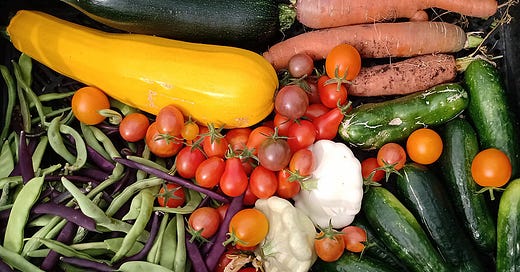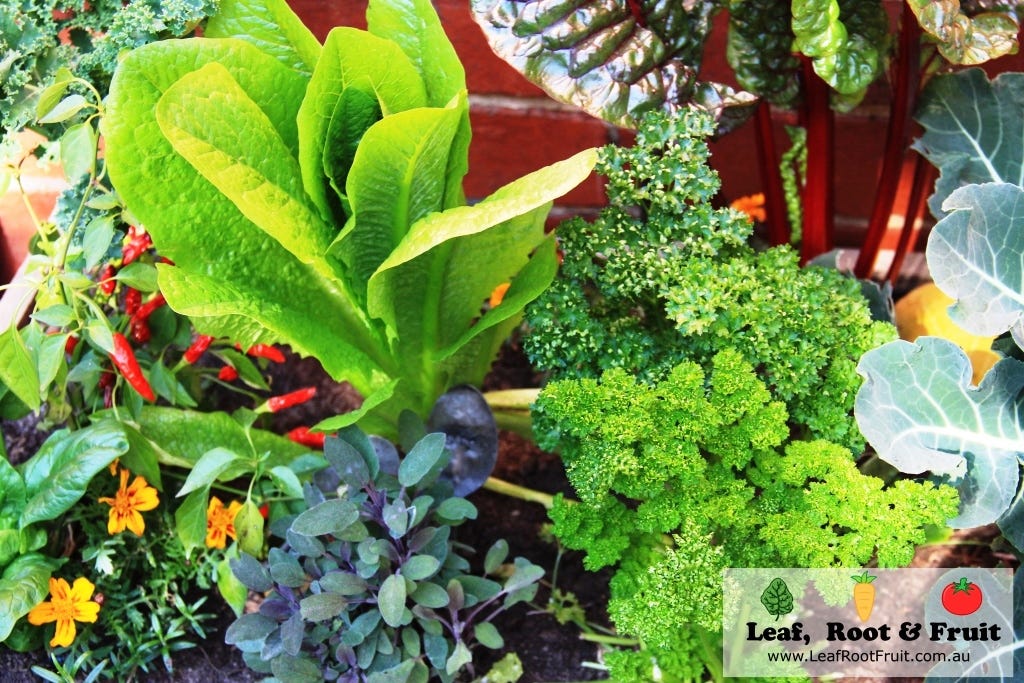What Vegetables Should You Plant and Grow?
Part Eleven of the Vegetable Patch from Scratch Series
If you have a huge vegetable patch, plenty of time on your hands and the resources to make it happen, then go for it: grow anything and everything! But if time or space are limited then you need to make the most out of your patch.
Without receiving good advice, people new to growing vegetables run the risk of failure and frustration. The most common reasons are:
choosing the wrong plants to grow, or
trying to grow them at the wrong time of the year.
What should you grow in your vegetable patch?
Regardless of your growing situation, the best advice I can give is this:
grow what you like to eat.
Focus on growing food that you regularly include in your meals. If you are just starting out, then don’t worry about growing gimmicks such as cucamelons, if you’ve never tried them before. Sometimes those more unusual varieties of vegetables may not be overly productive, or you may not even like the taste of them.

Similarly, if you live in a temperate climate and your space is limited, then don’t waste it on growing marginal crops such as sweet potatoes or watermelons. If you garden in Darwin, forget about growing parsnips. Focus on what grows reliably in your climate. There’s a reason why most gardeners in temperate climates focus on growing common vegetables such as lettuce, carrots and tomatoes. It’s because they are reliable, fairly easy to grow, abundantly productive and tasty!
The Leaf, Root & Fruit philosophy of edible gardening
To help you choose which plants to grow, I have developed the Leaf, Root & Fruit philosophy of edible gardening. It’s this philosophy that provided the name of my business, as well as the inspiration for the logo.
The philosophy is simple. Leaves are the easiest to grow, anyone can do it. Fruiting vegetables are more of a commitment – they take a long time to come to fruition and have more complex growing requirements. Roots (plus bulbs and stems) are somewhere in the middle, in terms of complexity and commitment.
Why? Think about the way a plant develops. First a seed germinates, puts down roots, sprouts leaves and grows bigger and bigger. Once the plant has reached full size, it flowers. If pollinated, the flower develops into a fruit. It takes time, sunlight, nutrients and water to get plants to grow to this stage. It takes even more time to condense nutrients and photosynthesized sugars into the fruit itself.

Safely nurturing your plants through to fruiting stage and harvest is a lot more difficult than sowing some leafy greens and picking them after only a few weeks. If you cannot provide optimum conditions for fruiting plants, then you will struggle to grow a decent crop to justify the time, money, water and effort you spend on growing them. Too often I see people giving up on edible gardening in frustration, for this very reason.
I’ve tried to make it easy for you to remember the basics of the edible gardening philosophy by using a traffic light system within my logo.

The green spinach leaf represents the easy-to-grow leafy greens. The orange carrot represents the moderately complex roots. The red tomato represents fruits, which require the most commitment.
I’ve explained the Leaf, Root & Fruit philosophy of edible gardening in more detail on my webpage.

Next week, I’ll discuss how to get the timing right for planting vegetables.
This post is one of many in my gardening series Vegetable Patch from Scratch. See the series index for a list of other topics in the series.
Read the next post in the Vegetable Patch from Scratch series:





